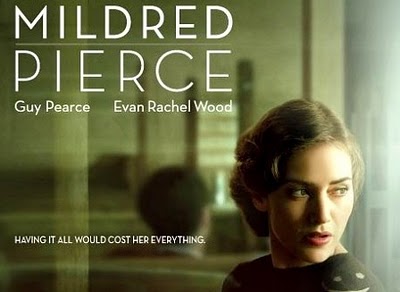Set in Glendale, California, in the 1930s, Mildred Pierce is the story of a middle-class housewife’s attempt to maintain her and her family’s social position during the Great Depression. Frustrated by her unemployed cheating husband, and worried by their dwindling finances, Mildred separates from him and sets out to support herself and her children on her own.
After a difficult search, she finally finds a job as a waitress, but she worries that it is beneath her middle-class station. Actually, Mildred worries more that her ambitious elder daughter, Veda, will think her new job is demeaning. Mildred encounters both success and tragedy, opening three successful restaurants and operating a pie-selling business, and coping with the death of her younger daughter, Ray. Veda enjoys Mildred’s newfound financial success, but increasingly turns ungrateful, demanding more and more from her hard-working mother and letting her contempt for people who must work for a living be known. Mildred’s attachment to Veda forms the central tragedy in the novel.
…Mildred Pierce is a triumph from beginning to end, and the casting in supporting roles couldn’t be bettered: Melissa Leo does her best Aline MacMahon as Mildred’s next-door neighbor Mrs. Gessler, while Mare Winningham seems to have sprung straight out of a 1930s diner as Ida (in the Crawford version, the sardonic Eve Arden played Ida like a valued secretary doing a bit of slumming in the restaurant trade). Haynes lets his female characters operate as they would have at the time in this milieu. He doesn’t do any modern editorializing on their plight and he doesn’t outright celebrate their resourcefulness; instead, he sets up a panorama of female struggle and solidarity and views it distantly, like somebody writing a history book and trying to keep personal opinions out of it.
Asked recently about his longstanding attraction to the melodramatic form known as the woman’s picture–“the untouchable of film genres,” as the critic Molly Haskell once put it–the director Todd Haynes had a ready answer.
“Stories about women in houses are the real stories of our lives,” he said. “They really tell what all of us experience in one way or another because they’re stories of family and love and basic relationships and disappointments.”
Framed as a whodunit–it opens with the killing of Mildred’s second husband, the rakish Monty Beragon–the original “Mildred Pierce” has long been a staple of feminist film theory, which generally views it as a conflicted genre hybrid that combines the masculine conventions of film noir and the feminine ones of melodrama.


I can’t wait to see this (though my wait will be a while–no premium cable). Movies from novels are rarely great, as women and their plot lines are often cut in favor of Hollywood’s dumbass ideas about who an audience can relate to best. So I’m happy to see this remade as a miniseries.
Women do seem to fare better in (scripted) television, and I hope the high-quality (premium) shows decrease the difference in prestige between film and TV. That difference, I think, still exists.
I love the article you link to about Deadwood (one of my all-time favorite shows, and, hence, one I’m terrified to write about), and haven’t ever really thought about the differences in character dynamics based on gender. Though I take issue with the writer’s characterization of Jane being “marginalized” as the series progressed, it gave me a lot to think about.
I also have a lot to say about Nurse Jackie and The U.S. of Tara, but that, too, would be the subject of a “long-ass blog post.”